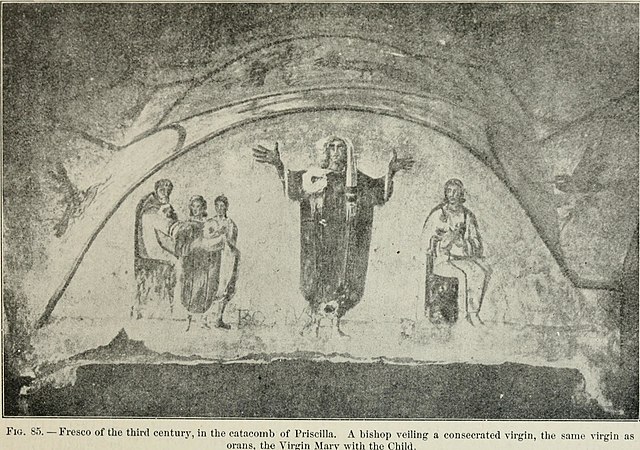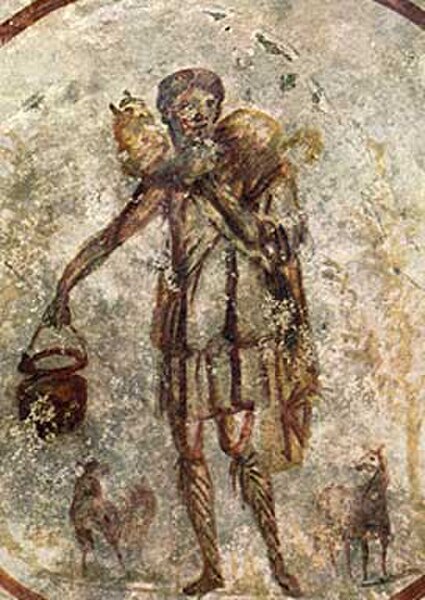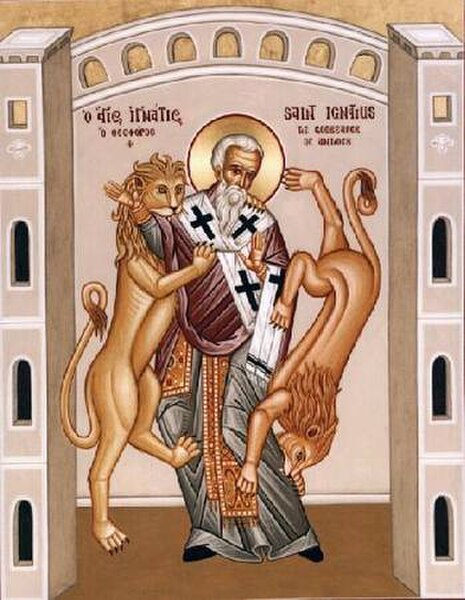The term "Great Church" is used in the historiography of early Christianity to mean the period of about 180 to 313, between that of primitive Christianity and that of the legalization of the Christian religion in the Roman Empire, corresponding closely to what is called the Ante-Nicene Period. "It has rightly been called the period of the Great Church, in view of its numerical growth, its constitutional development and its intense theological activity."
The Church Fathers in an 11th-century depiction from Kyiv
Irenaeus (2nd century – c. 202)
Emperor Constantine and bishops with the Creed of 381.
Christianity in the ante-Nicene period
Christianity in the ante-Nicene period was the time in Christian history up to the First Council of Nicaea. This article covers the period following the Apostolic Age of the first century, c. 100 AD, to Nicaea in 325 AD.
Funerary stele of Licinia Amias on marble, in the National Roman Museum. One of the earliest Christian inscriptions found, it comes from the early third-century Vatican necropolis area in Rome. Upper tier: dedication to the Dis Manibus and Christian motto in Greek letters ΙΧΘΥϹ ΖΩΝΤΩΝ (Ikhthus zōntōn, "fish of the living", a predecessor of the Ichthys symbol); middle tier: depiction of fish and an anchor; lower tier: Latin inscription of the identity of the deceased
Fresco showing a woman wearing a headcovering praying in the gesture of orans (3rd century)
Christ Jesus, the Good Shepherd, third century.
Ignatius of Antioch, one of the Apostolic Fathers and the third Bishop of Antioch, was considered a student of John the Apostle. En route to his martyrdom in Rome (c. 108), Ignatius wrote a series of preserved letters which are examples of late-1st to early-second-century Christian theology.






